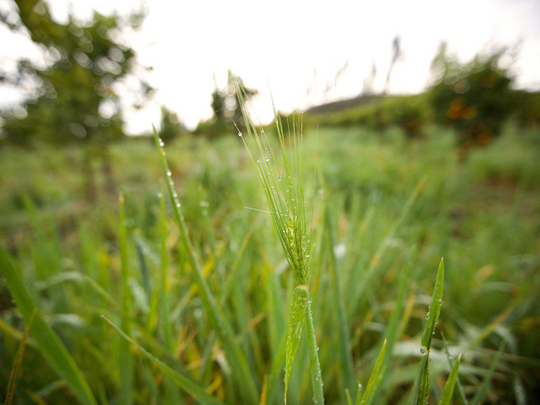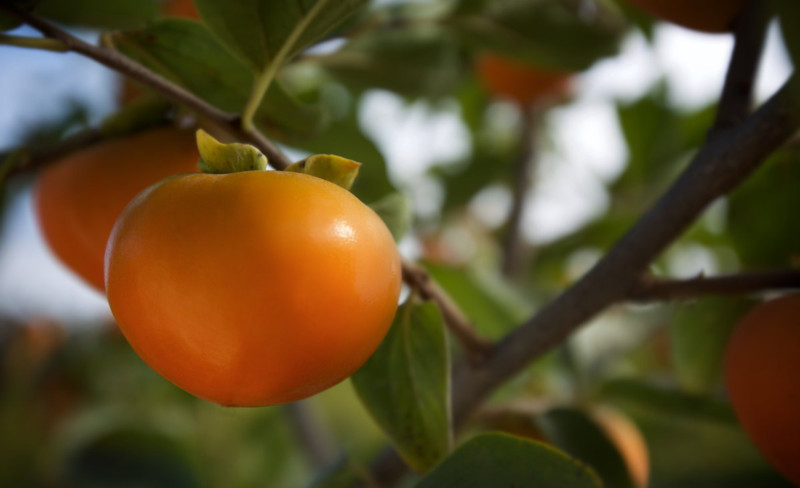
When John Chester, a filmmaker from California, quit his job to become a farmer, he didn’t do it out of a desire to “feed the world”. Instead, he says: “I’m trying to feed my neighbours — and if everyone did that, we would be able to replicate this.”
He is referring to Apricot Lane Farms, a 213-acre biodynamic and organic farm in Moorpark, California, that Chester runs with his wife, Molly. The couple nurtures 100 different types of vegetables, 75 varieties of stone fruit, and countless animal residents: Scottish highland cattle, pigs, chickens, sheep, ducks, hens, horses and livestock dogs. Last year, Apricot Lane Farms was recognised by the National Wildlife Federation and the North American Butterfly Association for supporting so much wildlife — not a recognition typically given to farms.
Apricot Lane is part of a growing movement in biodynamic farming. The number of biodynamic farms in the US is rapidly increasing, according to Elizabeth Candelario, co-director of Demeter USA, the nonprofit certifier of biodynamic farms and consumer products in the US. According to Demeter, the total acreage for biodynamic farming in the US increased by 16 per cent last year, totaling 21,791 acres.
Earlier this year, Demeter began collecting topsoil samples from biodynamic farms. This will help the organisation determine if the soil quality is improving year after year on certified biodynamic farms. According to Candelario, Demeter is the only national farming organisation implementing this practice. “This will provide a tool for farmers who continue to focus on building healthy soil, and give voice to power about biodynamic agriculture’s role in mitigating the impacts of climate change,” she says.
So what distinguishes biodynamic farming from organic? Austrian philosopher Rudolf Steiner, the godfather of organic and biodynamic farming, encouraged farmers to look to the cosmos before planting and harvesting crops. The biodynamic calendar is based on the positioning of the stars and the moon, meaning a seasonal crop cycle. Many biodynamic farmers utilise the lunar calendar, although it is not a requirement for certification.
The National Organic Program (Nop) standard forms the base to the Demeter standard — so if it’s not allowed in organic, it’s not allowed in biodynamic. If a farm is certified biodynamic, it means it has met the requirements of organic, with some additional measures. For example, while organic permits imported organic fertilisers and pesticides, biodynamic requires that a farm system itself produce its own fertility — meaning compost and nutrients — as much as possible through the integration of livestock and the rotation of crops. There are limits to the amount that can be imported from the outside — for example, no more than 36 pounds (about 16 kg) of nitrogen per acre, per year.
Also, while organic certification allows for organic feed imported to the farm from anywhere in the world, biodynamic requires 50 per cent of livestock feed be grown on the farm. Biodynamic also requires that a farm set aside 10 per cent of the total farm acreage for biodiversity, and strive for a balanced predator/prey relationship.
Where a conventional farm would bring in synthetic fertilisers, and an organic farm would substitute inputs that are allowed under the Nop, a biodynamic farmer would think: “Why is my farm needing this additional fertility, and how can I come up with a solution out of the farm system itself instead of being imported from the outside?”
“Biodynamic agriculture treats the farm like a living organism, self-contained and self-sustainable,” Candelario says. “Biodynamic is what organic farming has emerged from. It’s the way farmers have farmed for millennia, before the advent of industrial agriculture.”
For example, on Chester’s farm, the wildlife is vital in dealing with infestations. Last year, the farm had a slug problem. “I could have poured Sluggo and that would have killed them off,” Chester says. “But instead, I let the wildlife sort it out. As a result, I’m producing duck eggs that have been enriched by an escargot diet.”
Biodynamic principles were first introduced in the US after 1924, when Rudolf Steiner first delivered his agricultural lectures. In 1938, the Biodynamic Association was established, making it the oldest sustainable agriculture nonprofit organisation in North America. Still, there are only about 300 certified biodynamic farms in the US today, compared to 21,781 certified organic operations, representing a growth of almost 12 per cent between 2014-2015, according to data released in 2016 by the Agricultural Marketing Service’s National Organic Program. This is the highest growth rate since 2008, with an increase of nearly 300 per cent since the count began in 2002. The total retail market for organic products is now valued at more than $39 billionn in the US, compared to $75 billion worldwide.
Candelario says the reason for the slower growth in biodynamic farms is that although its principles were adopted in the 1930s, they’ve been slow to catch on. It was really winemakers that caught on first. “Winemakers couldn’t help but notice that some of the finest wines in the world are made from grapes grown in biodynamic vineyards. Vineyard and winery adoption has occurred so quickly that [the US] now has the third largest number of biodynamic vineyards and wineries in the world, following France and Italy.”
Now, Candelario says the natural food industry is beginning to recognise that “you can’t have a sustainable business model if the farming that stands behind your products is unsustainable”. More than a dozen US food companies, including Republic of Tea, Back to The Roots, Amy’s Kitchen, Lakewood Juices and Lundberg Family Farms, are now sourcing from biodynamic farms, citing commitments to sustainable practices.
Last year, Demeter worked with more than 50 US brands to bring biodynamic products to the market. Errol Schweizer can attest to the demand; he was the lead merchandiser and negotiator at Whole Foods for nearly a decade and now consults at numerous health food retailers across the US. When Schweizer joined Whole Foods, the company was carrying few biodynamic brands. Schweizer added more to the shelves, not only because of the farming practices but because of one basic test: taste.
“Customers want it, even if they don’t recognise the biodynamic certification on a box,” he said. “What they want is food that tastes good and is grown ethically.”
Biodynamic foods are more nutritious than conventionally farmed vegetables and fruits, according to research. Like organic farming, biodynamic farming prohibits the use of chemical pesticides, allowing plants to produce more of their own antioxidants to fight damage. These antioxidants are not only beneficial to humans, but they also impact taste and flavour, resulting in more flavourful food.
But while it may be healthier and taste better, critics of biodynamic farming raise questions about its ability to feed the masses. Nikhil Arora runs Oakland-based Back to the Roots, which sells biodynamic cereal. Arora sources the wheat from Fred Kirshenmann’s 1800-acre farm in Windsor, North Dakota, which is certified organic and biodynamic. Kirshenmann was an early adopter of Steiner’s methodology; in 1975, the farm was organic but by 1981, he had become one of the first biodynamic farms in the country.
Launched in January 2016, Back to the Roots biodynamic cereal sells in Whole Foods and Krogers for about $5 a box, on par with health food cereals such as Kashi and Nature’s Path. The company’s cereals are also in 2300 schools across the country. The demand has been tricky to manage. “We want to scale but we have to be mindful of how much supply we have,” Arora says. “We’re working directly with the farmer, not a commodities market. We pre-purchase the wheat before he even harvests it. So it’s a different model.”
Apricot Lane Farms likes to keep it local, selling eggs to local health food stores such as Erewhon. Some of the vegetables and fruits are sold to LA restaurants and the rest are sold at speciality markets as well as online.
“What people don’t understand is that biodynamic farming is about responding to the farm, living, breathing it,” Chester says. “If you have a problem, you have to think of three solutions that come from the farm itself. Those so-called problems are part of the art of farming, which has been lost in this rat race to produce cheap food.”
Chester argues that buyers have to change the equation by voting with their purchases. Candelario agrees. “Consumers need to continue to demand transparency in the food they purchase and support the brands, and the farms, that are bringing products to market in the most ecological way possible. The beautiful short term reward in all of this is that our food is only as good as the farming that stands behind it.”
–Guardian News & Media Ltd














